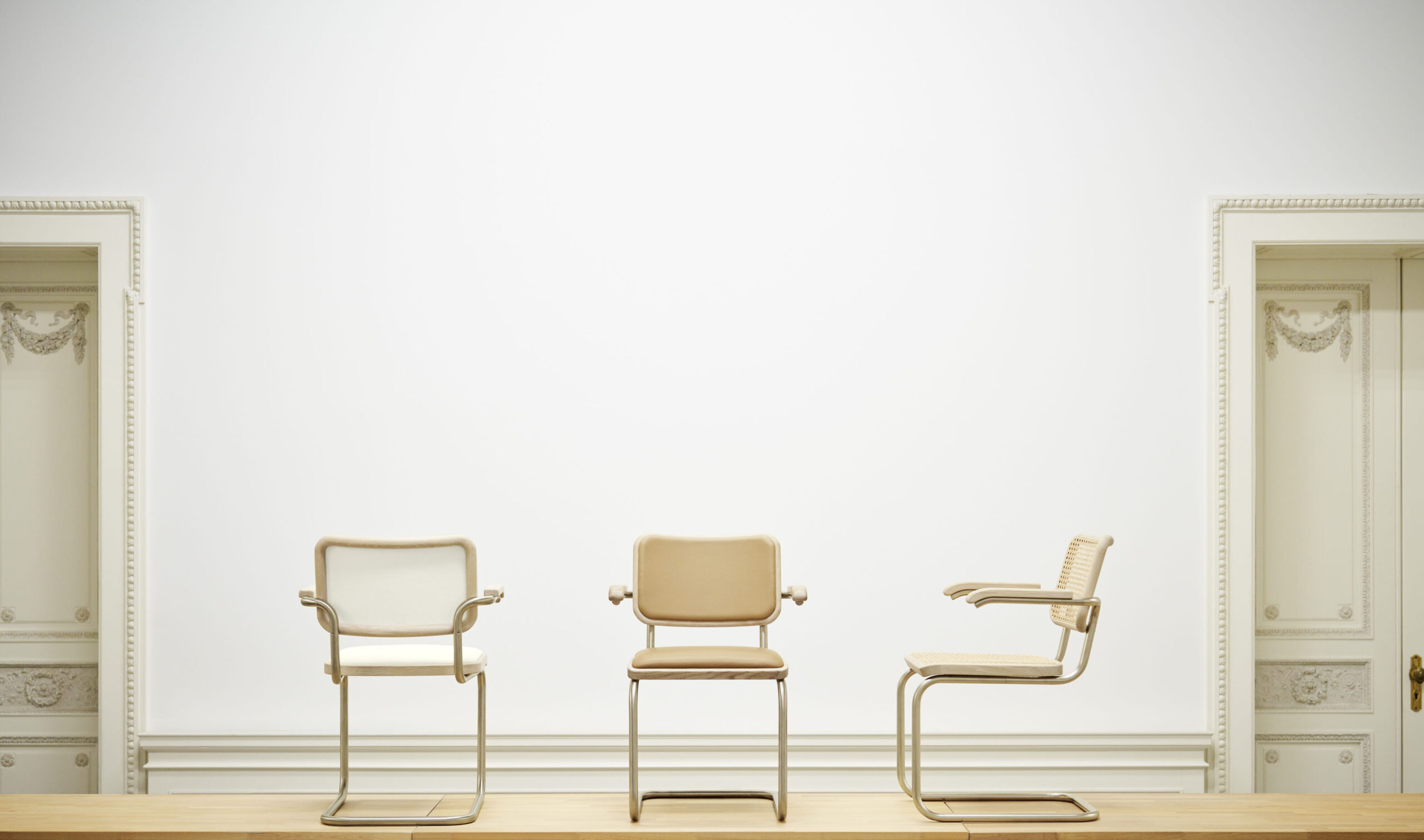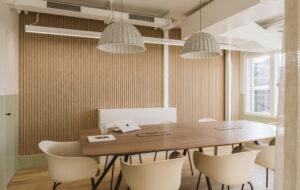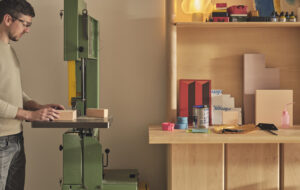 |||
|||
“Whenever we approach an office project, it’s not just about changing the space,” says Christopher Crawford, senior associate at Gensler Europe on its reimagining of the Hearst publishing house. “It’s about embracing, establishing, refreshing or facilitating the company’s mindset and a working culture. And, for Hearst, this was an exercise in breaking down barriers and creating a shared sense of home for all the brands in their world renowned portfolio.”
The shift has come with both a new name “House of Hearst” and a prestigious new location for the company. Spanning five floors and totalling 6,588sq m, the building sees the leading publisher, formerly housed over two Soho-based offices, being consolidated into the new LSQ London development in Leicester Square. The space now brings together multiple media brands, including Good Housekeeping, Cosmopolitan, Elle, Harper’s Bazaar and Esquire under one roof for the first time.
 Photo by Gareth Garnder
Photo by Gareth Garnder
“It was a big move for them in many ways,” explains Crawford. “For Hearst, it was seen as a real statement and there was of course some concern – like with any big change, that it would lose the familiarity of its Carnaby Street location and everything that had been built around that so far, as well as how all these big players would exist in one place. But at the same time it was a great chance to actually eliminate the slight feeling of hierarchy between the existing buildings, while somehow giving all of the brands space to spread their wings further together.
“For us, we decided to look at the House of Hearst like a real home; the shared spaces would be accessible to and be representative of all the family as a whole. The space would then branch off into brand ‘neighbourhoods’, comparable to bedrooms in a home, which were the publications’ own and a place they could put their own stamp.”
 Photo by Gareth Garnder
Photo by Gareth Garnder
This new ideation of a House of Hearst as an all-encompassing identity was also a chance for the company to push forward its latest venture into existence as a lifestyle brand. So the name would not just be synonymous with printed media but also of a Hearst “experience”, shown in its own events and how its brand was represented externally. Therefore the space needed to promote a feeling of stepping in and being welcomed into Hearst’s world.
For that reason, these shared spaces and the overall feel of the scheme takes its cue from a high-end residential property. And let’s not forget that some of the most influential interiors magazines are brought to life within the Hearst walls – so referencing this style-savvy and trend-aware, if not trend-producing, platform could not go amiss.
“This is where our ‘visioning sessions’ come in,” says Crawford. “We had lengthy consultations with both the client and its brands, with activity analysis and co-creation workshops to glean information, not only on behaviours but ideas for the look and feel of the new workplace. Key stakeholders like Elle Decor, Country Living and House Beautiful talked through aesthetics and we presented our developments at certain milestones within the project for feedback. The interiors really became a great chance for collaboration.”
 Photo by Gareth Garnder
Photo by Gareth Garnder
What has transpired is an elegant yet welcoming feeling of hospitality for these shared spaces. This includes a large flexible reception area, central meeting suite, library space and kitchen/dining area. What also came from the visioning sessions was the realisation that, actually, when it came to the way the brands work, there were more similarities than differences. So these areas became key to breaking down walls, fostering collaboration and making spaces where all employees can socialise and work together.
A muted palette has been chosen: the main architectural finishes are pared back, with pale flooring by Domus, light wall paints and pale wood built in the seating. Then, the more on-trend freestanding furniture, such as the Gubi Masculo armchairs, Grasshopper lamp and Made.com coffee tables, have been brought in for some colour blocking moments. The reasons for this were manifold: firstly this classic, sophisticated and timeless look of the neutral base palette was chosen to symbolise an all-encompassing Hearst aesthetic. Secondly, the budget for the interiors scheme on the project was actually quite modest, so this meant more en vogue elements could be what Crawford cites as “low cost but high impact”, and also potentially be changed as trends evolved. Lastly, the pale backdrop, with movable colour moments, made the most of the natural light, bouncing it around and emphasising that feeling of generosity of space.
The reception will double as a meeting and entertainment zone. As well as grey Muuto Outline sofas and Realm Joinery bespoke shelving, this space features one of the key pieces of levelling design language created for this new Hearst-centric world.
 Photo by Gareth Garnder
Photo by Gareth Garnder
“A plaque wall was created and manufactured by Windsor Graphics to our design,” says Crawford. “Each plaque represents a publication under the Hearst umbrella and is engraved using the Hearst typography. On the reverse side of each plaque, the specific branding for each publication was also included, so that individual brands could be showcased around particular events or milestones. Say Elle is running a party in the new reception space; the team will turn their plaque around to its branded form to give it prominence. There are also digital and analogue screens in all the shared spaces, so again, if a particular brand wants to have ownership of that space while the team is using it, they can stream content or make adjustments specific to them while it’s inhabited.”
There is also a bespoke ColorCore white laminate, lacquer-finished desk with one side corrugated and the other dusky pink, with Gubi pendant lights above. Beside this is an infinity mirror, fabricated by Goodwin & Goodwin and emblazoned with a capital H. This was designed to represent the idea of the company’s existing rich heritage paired with future possibilities stretching before them – emphasising the forward-facing, innovative stance of the brand.
To further support cohesion and equality between brands, Gensler worked out a desk-sharing mobility ratio with Hearst that meant there were actually fewer desks than the total head count, meaning that alternative work settings would be utilised.
Additionally, meeting rooms are now centralised, allowing the Workstories desks and Hay chairs that make up the workstations to be situated around the periphery of the glazed partitions. This not only means more natural light and better inward and outward vistas, but also the ever-presence of the co-working spaces.
Alongside this spirit of the Hearst family, both Gensler and the client were keen to still give opportunities for ownership of space, in order to empower brands and allow them to show a sense of identity – so there are plenty of moments with the scheme that facilitate this. As well as digital and analogue screens in every neighbourhood, there is also the “portals” initiative between areas.
 Photo by Gareth Garnder
Photo by Gareth Garnder
“Instead of just a simple corridor between say the Cosmopolitan, HR and Finance neighbourhoods,” explains Crawford, “we saw this as another chance for a neutral space that could be customised to introduce the zone you are transitioning to. There are mesh walls that can be used to hang ideas for looks for shoots, or tear sheets, or printed layouts of pages in progress.” These spaces are also fashioned into the shape of an archetypal house, referencing the residential motif once again.
In addition to creating a space that would be the vehicle for this shift in outlook, Gensler also provided a change management programme as part of the redesign, helping to mediate changes and ensure a seamless shift in workplace practices and culture. Gensler has carried this focus on a culture of movement, innovation, agility, inclusivity and integration to the nth degree within this fit out. From top to bottom, from the nuts and bolts, from the inside out, they have let these goals holistically guide the project and permeate through not only the walls but each member of the House of Hearst too.
When Gensler designed the London HQ for publisher Hearst, it looked to high-end residential style for inspiration
























